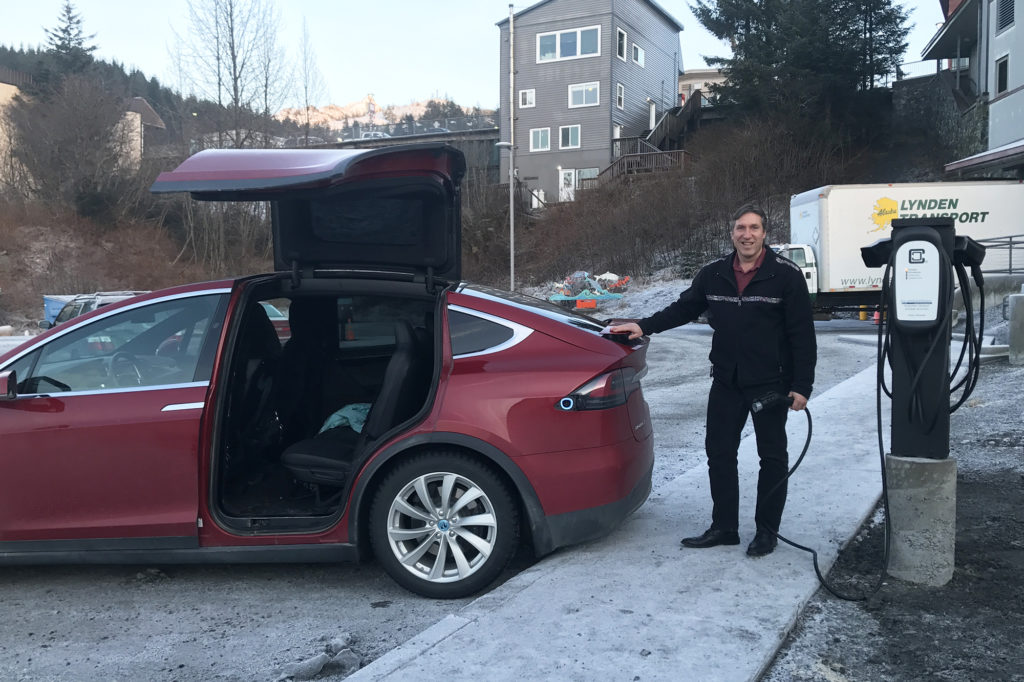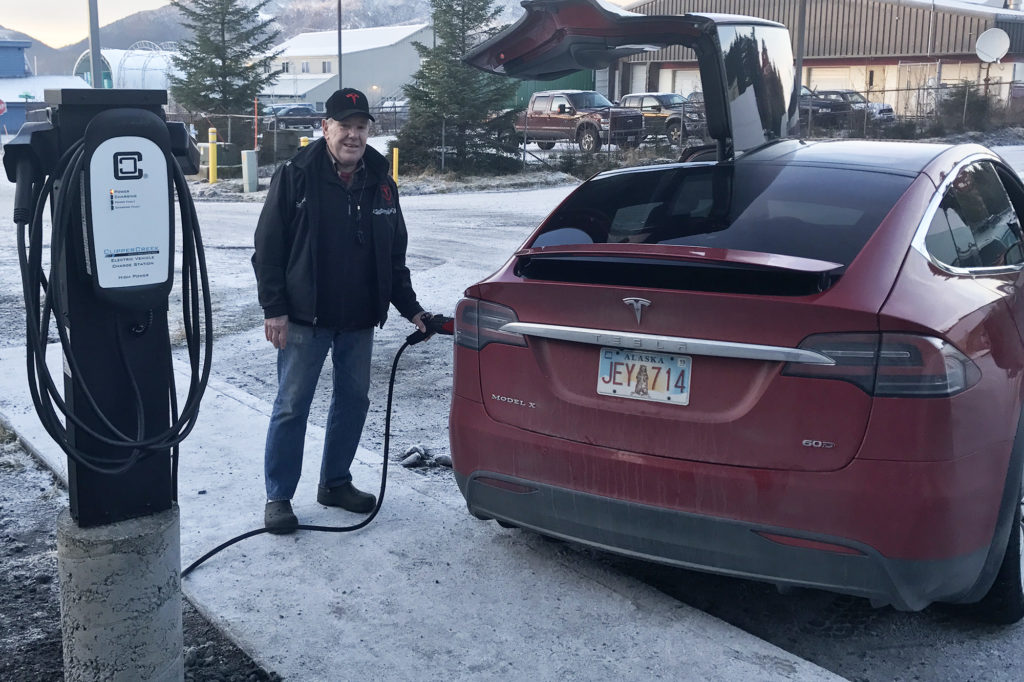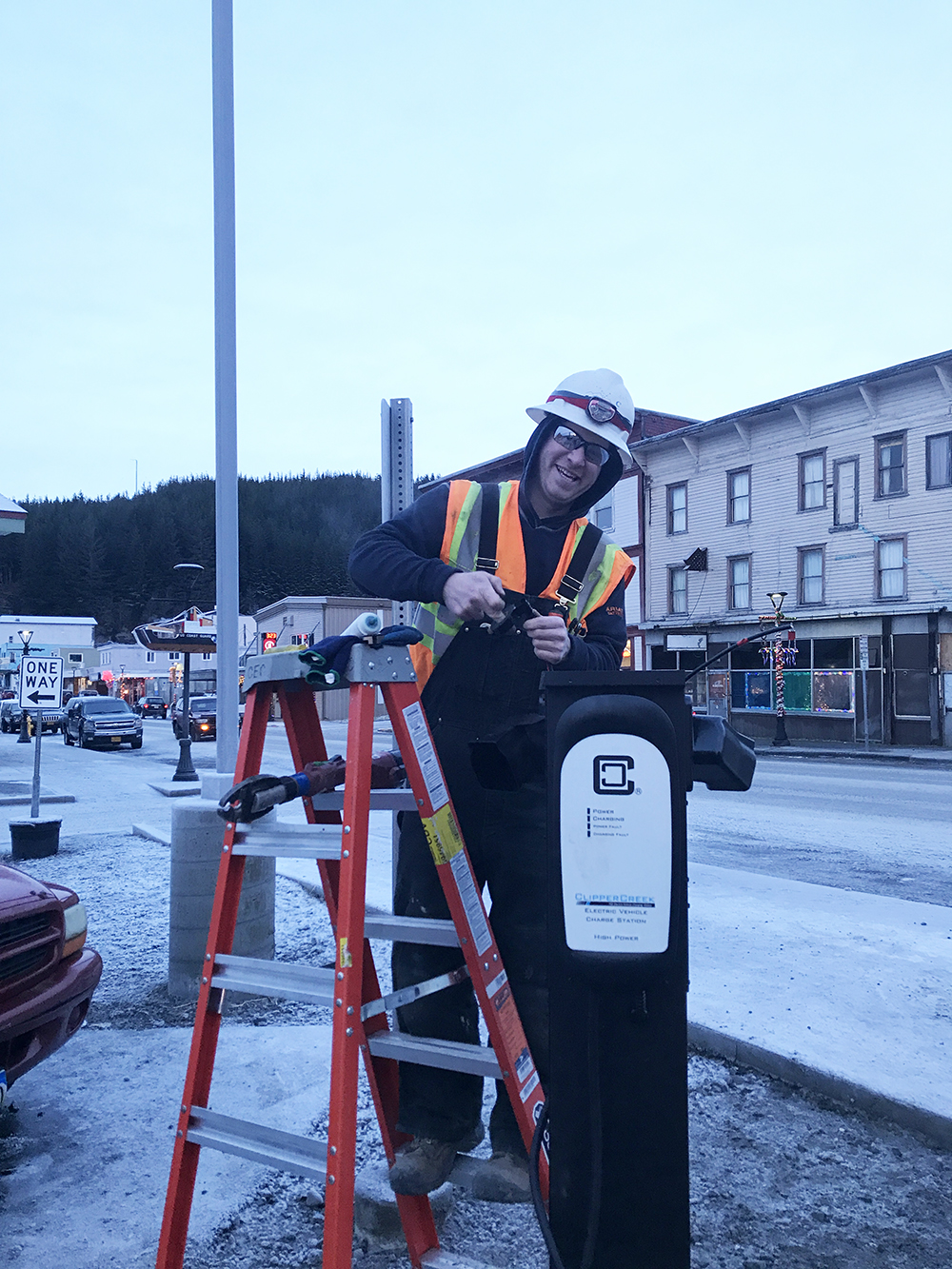
By his count, there are all of two electric cars in Cordova, Alaska, but Clay Koplin expects that number to grow. In fact, as CEO of the local co-op, he’s determined to make that happen.
That’s part of why Cordova Electric Cooperative and the City of Cordova installed four electric vehicle charging stations in late December. To borrow from the old movie line, Koplin believes that if you build it, they will come.
“A lot of my research with other utilities and Alaskan coastal communities has indicated that the availability of charging stations in a community center, in convenient locations, is a major force toward encouraging the adoption of electric vehicles,” said Koplin.
Like many co-ops, while promoting conservation and efficiency, Cordova EC has seen revenues decline. “This is one step in a bigger plan to grow electric vehicles as one of our large revenue streams,” said Koplin.
Considering that a gallon of regular gasoline was going for $3.89 in early January, members can save a boatload of cash with cars that plug in. So why are there only two? Koplin believes many of his members simply aren’t familiar with the vehicles.
“Most people in the community have not driven them. They don’t know if they’ll hold up well in snow and ice,” said Koplin. He noted that Cordova’s location on the Pacific gives it a moderate climate, which bodes well for EV battery life. And with an average commute of three miles, it’s doubtful drivers would be stranded.
Cordova EC is looking into buying an all-electric Nissan Leaf, which it would loan to members for a few days at a time, similar to a program at Colorado’s Gunnison County Electric Association.
Cordova has vast hydropower resources but no dam, meaning a lot of potential power literally spills away. That adds to Koplin’s intrigue with the idea of vehicle-to-grid capabilities, or V2G. He envisions using the co-op’s network to communicate with electric cars—topping them off when there’s plenty of hydro, or discharging electricity from the cars to the grid to save the co-op from expensive diesel generation.
“We could give them the energy free and it would actually save everybody else on their electric bill because it would reduce our systemwide diesel use,” said Koplin, noting that hydropower is about 85 percent cheaper than diesel generation. He’s is actively seeking partners to help make these dreams a reality.
For now, what’s free is use of the chargers.
“It’s not a revenue proposition, it’s a service proposition. And because we’re a cooperative we don’t think just in terms of cost and profit, we think in terms of value,” said Koplin.

Anyone is welcome to plug in, including the visitors Koplin—who is also Cordova’s mayor—hopes will come. He said Alaskan EV owners are increasingly staging rallies, picking destinations with chargers. A car charged in Anchorage could easily drive the 60 miles to the ferry terminal in Whittier and then sail over to Cordova, where it could recharge.
The chargers cost $700 each, paid for with money Cordova EC gets from selling renewable energy credits. And in doing his homework, Koplin discovered that with all the fees for credit cards and other expenses, most utilities that require payment to use their charging stations end up losing money.
“It’s costing more to charge for the electricity than the electricity is worth. So it’s actually cheaper to give the electricity away.”
Michael W. Kahn is a staff writer at NRECA.
